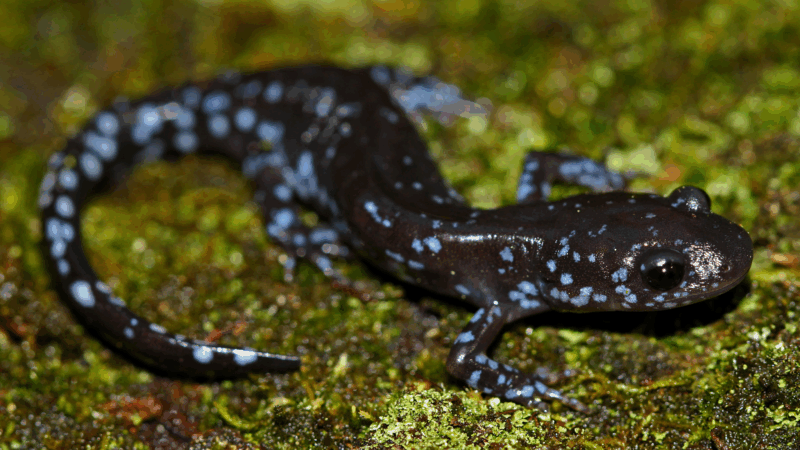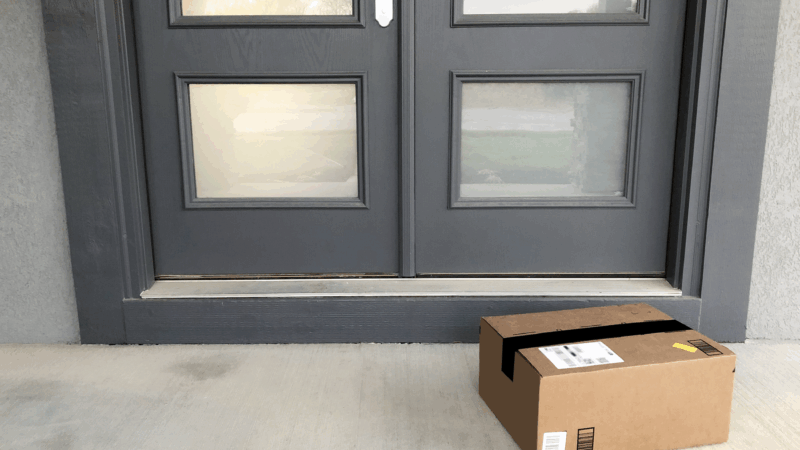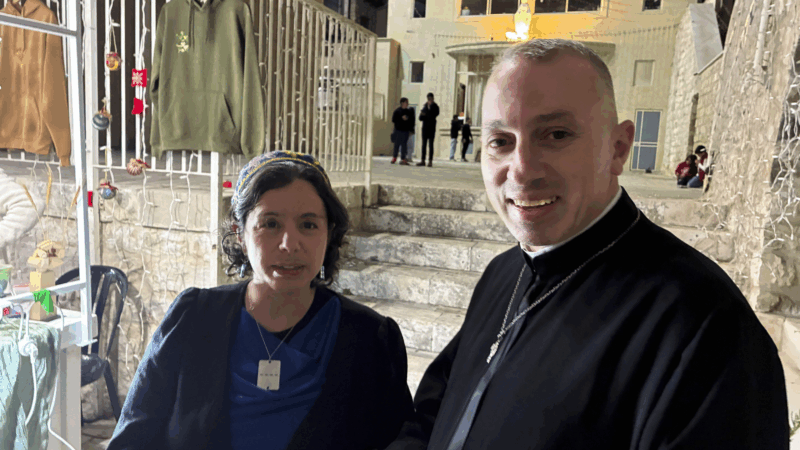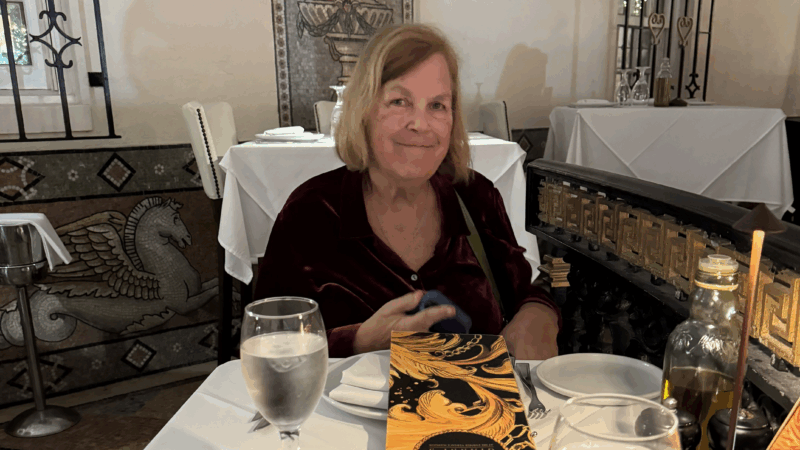Healing Gardens
At the Princeton Towers retirement home, there’s little that is home-like. The graying concrete and brick buildings house about 270 residents, mostly low-income women and minorities. The towers sit on the urban Princeton Baptist Hospital campus. It isn’t always a quiet place. There are a steady stream of ambulances. But walk across the street into the 20-month-old healing garden, and things begin to slow down.
There’s a water wheel, and a fence featuring Gee’s Bend quilt designs. There are eucalyptus trees and herbs and fruits. Like the hospital, the garden aims to heal, only it uses memory-jogging smells and sounds to do the trick. Seventy-five-year-old Ona Mae Gardner has lived at Princeton for six years. She visits the garden a few times a week.
“I usually go right over there and sit down and just look around. I brought my sandwich over here…um-hmm, by myself. Me and the birds. And the, I call them the butterfly bush on the outside there, it was just full of butterflies. Interesting.”
On this day, Ms. Gardner is joined by Edgar Crawford, Roald Hazelhoff, developer of the garden, and a few other companions from the towers. Crawford, who is 78, strolls the garden in army fatigues. He stops at a muscadine vine, a reminder of the one that used to grow near his childhood home. His grandmother made jelly out of it.
“It was wild in the woods. Muscadine vine we couldn’t cut down. We had to leave it there. Because that’s what we had to eat on during the winter. That jelly. I mean it was good. You smell it long ways, country boy. Put it between a biscuit…make a sandwich out of it. That’s what I went to school with.”
Stirring up memories with plants and herbs and foods was just what the creators of the garden had in mind. Roald Hazelhoff, director of the Southern Environmental Center, organized the project, funded by the hospital, the community and others. Hazelhoff says that officials with Princeton Towers initially wanted something simple in place of the junked cars and old sofas that once occupied the garden site.
“And they came to us about two years ago and asked us if we would help them design a vegetable garden. And we thought, vegetable garden, we could do that, but we’re more than vegetable gardens. So we started talking to them and got the hospital involved, started having discussions about a much kind of bigger concept.”
Today, the garden is a refuge not only for the senior adults at the towers, but also for hospital staff and patient families.
“For example, the hospital has staged a health fair and a health day here. Of course, this being the south, it consisted of barbeque and other such healthy items, but they all had a good time.”
Landscape architect Arnie Rutkis says the tower residents helped design the garden.
“There was a survey they were given. We asked them to jot down herbs that they might’ve used when they were, you know, growing up or things that they kind of encountered. Heirloom-type plants, things that they might have had around their homes. Spirea was one of the plants that was mentioned, there were several roses, muscadine, the persimmon tree, and a few other herbs like I think the oregano was one of them and mint.”
There are also medicinal plants such as eucalyptus and lavender. There are fragrant herbs such as rosemary and thyme. And then there are plants like velvety Lamb’s ear that are just begging to be touched.
“It has these wonderful, soft fuzzy, silvery gray leaves, hence the term lamb’s ear. That look, it looks soft. You don’t even have to touch it to feel it.”
Signs warning ‘Take only memories?’ You won’t find those here. Garden patrons are encouraged to touch and even clip some of the things they like.
“The more you can interact with your environment and feel comfortable in it, the more you’re likely to feel safe and secure and heal basically.”
Ona Mae Gardner spots a persimmon that she’s itching to cut open. A persimmon’s heart, she recalls, comes in the shape of either a spoon, a fork or a knife.
“And that’s what the heart looks like of one. And I don’t know if this one being a hybrid, I don’t know if it’s that way or not, and I wanted to look and see.”
Edgar Crawford comes through with an old swiss army knife, and Hazelhoff begins to carve it up.
The American Horticulture Therapy Association says that healing gardens are becoming increasingly common throughout the U.S., this amid growing evidence that the gardens really do heal, in some way. They improve mood, lower blood pressure and reduce stress levels.
Brenda Johnson, director of Princeton Towers, says many of the residents arrive showing the early stages of Alzheimer’s; many are depressed. That’s no surprise, Johnson says. Leaving a home and memories behind is an adjustment that takes its toll.
“And that garden has brought a lot of that back. Because I’ve heard a lot of them say, well I used to raise this in my, umm, yard, or I used to, when I had a garden I grew this. So I think that garden over there has really brought back a lot of, has made them not feel like they’ve totally lost everything, had to give up everything.”
Back at the garden, Edgar Crawford spots some tomato plants, and soon he’s ready to head back to the towers and start cooking.
“I’ve got tomatoes in the freezer right now. Put them in my soup in the winter time. I mean it’s good stuff. You can survive off of this.”
In the snow, these salamanders get supercool
Blue spotted salamanders have been seen walking across snow and new research suggests how they get by in the cold.
When porch pirates steal medicine instead of holiday gifts
Mail theft can happen around the holidays, but sometimes, instead of getting a new iPad, the thief swipes a mail order medicine. Here's what to do about it.
U.S. and Ukraine reach consensus on key issues aimed at ending the war
The United States and Ukraine have reached a consensus on several critical issues, but sensitive issues around territorial control in Ukraine's eastern industrial heartland remain unresolved.
Despite Vatican-Israel tensions, Catholics and Jews work to build trust in Haifa
Religious leaders started getting together after Oct. 7, 2023, in the hope of preventing a repeat of Arab-Jewish violence that erupted after a previous conflict in Gaza two years earlier.
The strangers who guided her home — and returned with Christmas dinner
Mary Klein had just moved to a new city when she got lost. A couple stopped to help and guided her home. They returned the next day with Christmas dinner.
Crime in the U.S. fell in 2025. Will the trend continue?
Crime rates dropped across much of the U.S. in 2025. That was true for both property and violent crime. And it declined nearly everywhere: In big cities and small towns, and in red and blue states.







